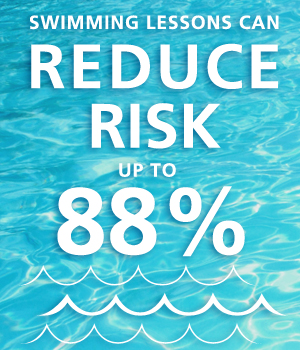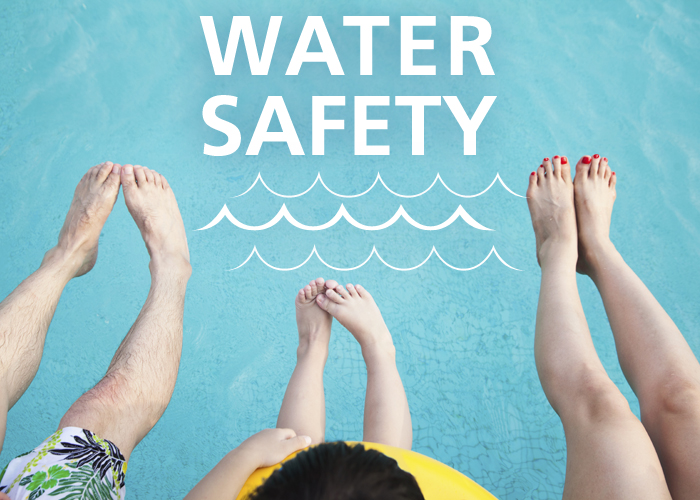Simple Strategies for Water Safety
Posted on June 25, 2014 at 6:00 am
By Gwendolyn Haley
I’m a bit of a worrier. I freely admit that I have a tendency to be an anxious parent. No one told me that once I became a parent, every potential threat would loom large over their lives like the sword of Damocles. Illness, accident, injury or anything bad that happens to someone else’s child becomes an imminent threat to mine, like the bounce house that became airborne and carried the children up 15 to 20 feet in the air. Intellectually, I know that isn’t likely to happen to my kids this summer, but I worry about it all the same.
In an effort to not become a helicopter parent, and to raise independent, capable children, I am constantly trying to assess threat potential and respond to the real risk, not my fears. That’s why, this summer, I’m choosing to focus on water safety, not bounce houses.
 Drowning is the 2nd most common cause of death in children ages 1-14 in the United States. However, unlike the bizarre bounce house incident, this is a danger that we can mitigate by making sure that we and our kids understand water safety. For example, research suggests that formal swimming lessons can reduce the risk of drowning in young kids by up to 88 percent.
Drowning is the 2nd most common cause of death in children ages 1-14 in the United States. However, unlike the bizarre bounce house incident, this is a danger that we can mitigate by making sure that we and our kids understand water safety. For example, research suggests that formal swimming lessons can reduce the risk of drowning in young kids by up to 88 percent.
My girls are strong swimmers, but I watch them like a hawk around water. I was never comfortable with anyone but me keeping an eye on them in a pool or at the lake. When we are at parties or family functions near water, my husband and I are likely to be the ones at the water’s edge, making sure everyone is ok. As a result, we don’t spend much time socializing. Turns out, I’m a little bit of a nut about water safety. That’s why I was fascinated by this article from 2010 “Drowning Doesn’t Look Like Drowning” or, if you’d like to see a video, WIBVTV shared this one in 2011 “Drowning Signs Aren’t Like the Movies.” After watching the video, I actually felt empowered—and I make sure that my kids do too. After years of fretting and worrying about every high pitched squeal or noisy thrashing in the water, I now know what I’m looking for, and it’s very different than what I thought. Drowning is silent, desperate, and nothing at all like television. The most frightening part is the idea that children often drown within feet of an adult who could save them, if they knew they were in trouble.
Here’s how I make sure my kids are safe around water:
- They’ve had Red Cross swimming lessons every year, that include basic water safety
- They are not allowed in the pool without an adult present.
- We wear personal floatation devices (PFDs) whenever we are in a boat. REI has a good guide to help when choosing a device.
- We know the signs of a swimmer in distress. A great resource on water safety for parents and educators is the Josh the Otter project.
A wise friend who recently purchased a home with a backyard pool took it one step further. Here’s her genius idea: the Adult On Deck (TAOD for short). The kids aren’t in the water without a designated adult assigned to be lifeguard.
Their job?
Watch.
Watch the corners of the pool, watch the kids as they splash around and look for the signs of trouble. Don’t get distracted. No talking to other adults, no stepping into the house to get a drink without handing the duty over to another adult. She even made a nifty badge to wear on a lanyard with the whistle. All the other adults can relax, chat and enjoy themselves until their turn to be on duty. This idea made the last 4th of July party we held lakeside so much more fun, for everyone. We had between 11 and 13 kids in the water at any given moment, but everyone had a chance to relax, while taking it in turn to keep watch. It’s so simple. And unlike the bounce house threat, this is one worry I can actually do something about.
What water safety tips work best for your family?
Tags: drowning prevention, Josh the Otter, parenting, water safety


